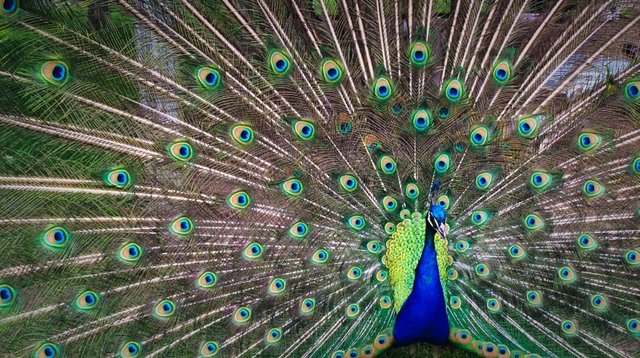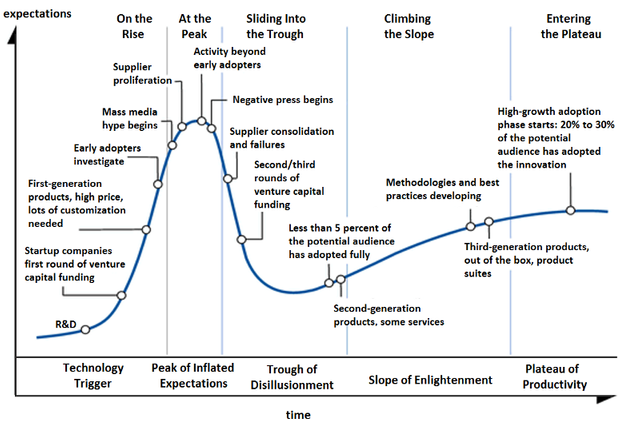Evolution and Entrepreneurship

If you ask people what Charles Darwin is famous for, most will probably tell you the theory of evolution. Darwin’s contribution to biology is not inventing evolution but rather the identification of the mechanism by which evolution happens: natural selection. His 1859 book On the Origin of Species is an examination of how selective pressures can be applied to species to cause them to change over time. The mechanism of heredity, later discovered by Gregor Mendel as the gene, has its own interesting implications to entrepreneurship and will be discussed in the future.
Natural selection is commonly thought of as ‘survival of the fittest’, a term Darwin coined. There are generally thought to be five types of selection including sexual selection (four natural selections and an artificial selection) and how each of these types of selection work have interesting implications and nuance. Sexual selection, to me, is generally the most interesting in how it relates to entrepreneurship.
Sexual selection is the process by which the sexual preferences of a species can cause it to change in response along lines that may or may not have anything to do with survival in the classic sense. Peacocks are the usual go-to example, with the males developing very large, unwieldy, and expensive (from a resource-allocation standpoint) tail feathers for the purpose of attracting female attention.

All five of the types of selection, in my opinion, are applicable to startups, but it’s the effects of sexual selection that I think are fascinating. We’re all already familiar with some of the effects. How many startups can you name raised unusually large amounts of money during a rush of industry activity that left you scratching your head, trying to figure out what would justify the investment?
Let’s first define what sexual selection looks like from a startup perspective. In my mind, startup sexual selection is anything that results from hype, FOMO, bandwagons, or other activity that could be classed as people (entrepreneurs, investors, and customers) rushing to a particular technology or approach for reasons other than technical considerations. It can create a quick rush of activity in a concentrated space. Importantly, this is not an inherently bad thing; it’s more a reflection of the way in which human brains suffer from biases that influence thinking rather than a reflection of the quality of the conclusions they come to. Good startups with obviously superior and future-facing technology are just as susceptible to being chosen for investment or by customers for the wrong reasons.
Just as how we think of sexual preference in organisms, entities express the same type of preferences in their own activities. Most investors will admit the process of deciding which startups receive investment is not purely technical. All five of the types of selection, in my opinion, are applicable to startups, but it’s the effects of sexual selection that I think are fascinating. We’re all already familiar with some of the effects. How many startups can you name raised unusually large amounts of money during a rush of industry activity that left you scratching your head, trying to figure out what would justify the investment?
Let’s first define what sexual selection looks like from a startup perspective. In my mind, startup sexual selection is anything that results from hype, FOMO, bandwagons, or other activity that could be classed as people (entrepreneurs, investors, and customers) rushing to a particular technology or approach for reasons other than technical considerations. It can create a quick rush of activity in a concentrated space. Importantly, this is not an inherently bad thing; it’s more a reflection of the way in which human brains suffer from biases that influence thinking rather than a reflection of the quality of the conclusions they come to. Good startups with obviously superior and future-facing technology are just as susceptible to being chosen for investment or by customers for the wrong reasons.
Just as how we think of sexual preference in organisms, entities express the same type of preferences in their own activities. Most investors will admit the process of deciding which startups receive investment is not purely technical.

The research firm Gartner developed what is generally termed the Gartner hype cycle. The Peak of Inflated Expectations territory is generally responsible, I believe, for the effects of sexual selection on startup activity. This is where some bad startups will receive unwarranted positive attention because of their association with the wave of hype. Ultimately, these help contribute to the Trough of Disillusionment, as people realize the sexual characteristics they were selecting for may not be great competitive advantages.
The prevalence of sexual selection can cause problems for a species. In particular, two behaviors can be rewarded by sexual selection in a manner that could harm the species in the long run.
The first is deception, or mimicry. Sexual selection can reward deception if the selective mating partner is unable to discern between genuine and misleading qualities in their mates. One example of deception is the long-tailed dance fly, Rhamphomyia longicauda, in which the females can expand their abdominal sacs, giving the false impression that they’re full of eggs waiting to be fertilized.
We see this behavior in startups all the time. How many young companies work hard to give impressions of activity and engagement in their brand new communities or platforms? Even large companies sometimes accidentally give false impressions of engagement. Every investor has stories of young founders working hard to put forward an image of being more successful or farther along than is real. Deception, though the name is harsh, is not inherently bad. It’s a tool that sexual selection accidentally rewards which has the potential to allow bad things to slip through the cracks. When something looks good, be vigilant. In an environment where merely looking good can be well-rewarded, it pays to do diligence, otherwise we risk accidentally rewarding deceptive behavior.
The second aspect that I want to touch on is that sexual selection can prefer traits that make a species less likely to be successful in surviving. Peacocks are a simple example of this phenomenon. In the wild, female peacocks preferring ever-larger tails causes the males to invest more energy into growing more and longer tail feathers, which can serve as a gigantic ‘eat me’ sign to predators, as well as weighing the males down, making them easier to catch. In nature, sexual selection operates in a tug-of-war with natural selection, where going too far to sexually prefer characteristics can cause harm to a species, causing natural selection to push the species back towards some median state.
Consider this scenario: In a glut of investors, founders have some advantages in securing funding (compared to investor-light environments). This can lead some investors to structure deals in manners that favor founders more than traditionally would happen, to attract founders away from competing investment opportunities. Founders may prioritize the sexy aspects of the deals, like valuations or large, upfront cash payments, or long-term control, setting off an arms race amongst competitive entrepreneurs to secure increasingly-large deals. History has shown large raises with large valuations to potentially be dangerous to the startups.
The natural state of the ecosystem will be to self-balance, but probably only after some good companies die for some bad reasons. Median valuations are rising, and there’s disagreement over whether or not the age of ‘founder friendly’ investors is over or here to stay. Unconsciously, entrepreneurs and investors could be playing into a runaway feedback cycle that ultimately causes a self-correcting era of downward valuation trends, smaller raises, and less freedom afforded to founders. We can’t predict what will happen, but nature suggests that runaway sexual preferences can cause harm to a species and result in a reversion towards a more conservative state.
Sexual selection can’t be stopped, not as long as humans are the decision makers. But we can work to understand why we should be cautious when hype bubbles pop up. We often tell young entrepreneurs that VC funding is not an indication of validation. I think that can be expanded to a lot of areas: If something can be reduced to a category in a VC version of Miss America, take a very measured approach in how you evaluate it. Sometimes, the future is both technically marvelous and beautiful, but don’t overlook the ugly innovations. After all, beauty changes over time anyway.
As an entrepreneur, be mindful of trends. If everyone is chasing, for example, blockchain and you have an idea for a blockchain startup, can you genuinely boast a unique perspective to the technology, or are you accidentally a me-too company chasing the success you’ve seen in your peers? Should you chase the largest possible valuation and most founder freedom from potential investors? That’s not to say you won’t be successful following those trends, but if the winds shift to a new era of perceived beauty, what will you be left with?